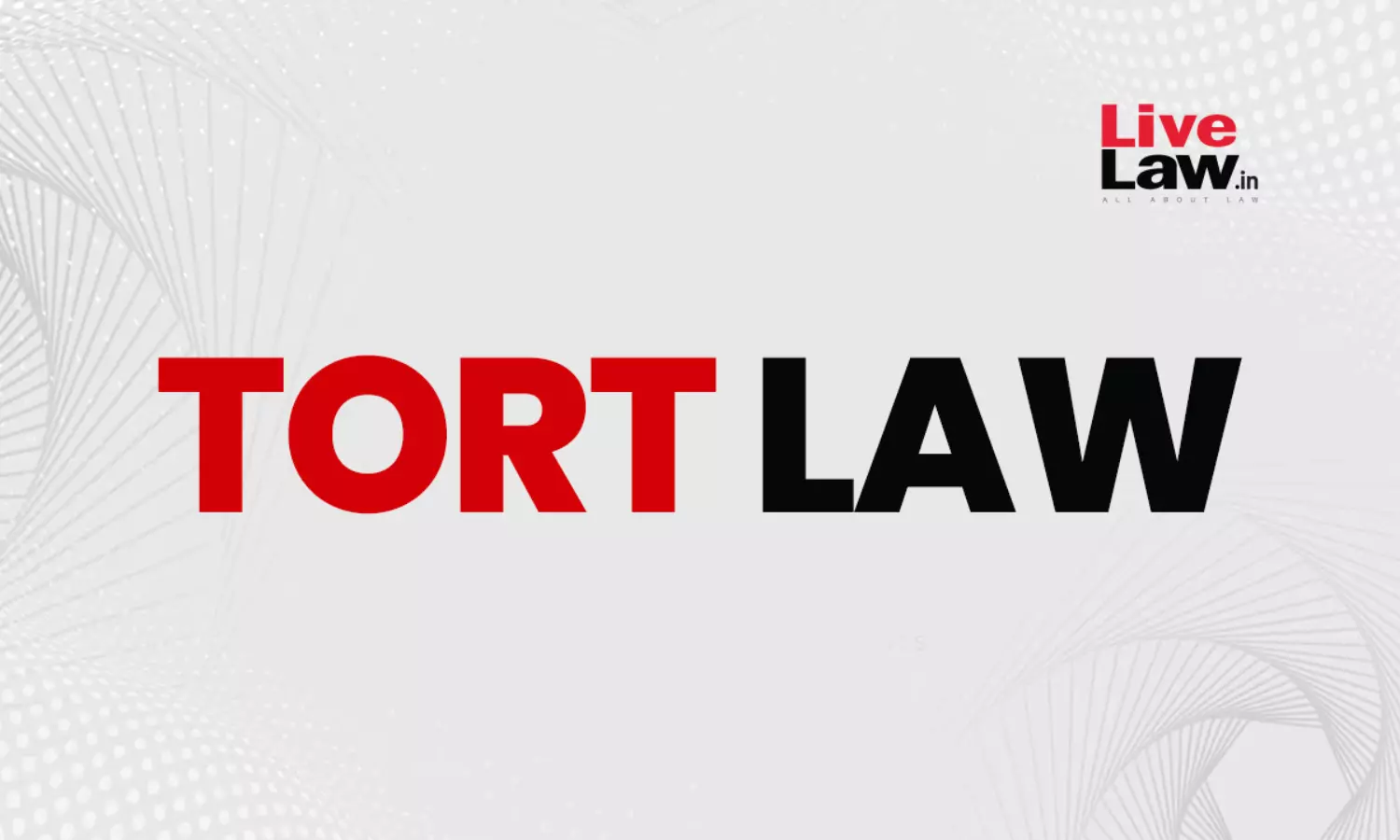
Tort is an infringement of legal obligation which amounts to civil wrong. The purpose of tort law is to provide a relief against a harm that has been done to a person and to protect them from the wrongdoings of others. Usually, this is done by compensating the victim with monetary compensation. In the economically developed nations like U.S.A, Australia, Canada and U.K., tort law...
Tort is an infringement of legal obligation which amounts to civil wrong. The purpose of tort law is to provide a relief against a harm that has been done to a person and to protect them from the wrongdoings of others. Usually, this is done by compensating the victim with monetary compensation. In the economically developed nations like U.S.A, Australia, Canada and U.K., tort law has developed and increased significantly in this period of liberalization. Several new forms of torts have been recognized like toxic torts, harassment, and many others. Despite having one of the most extensive legal systems in the world, India has not yet created and enacted a well-developed and subtle formulated statute that addresses all areas of tort law. There are numerous torts which are considered both as a crime and civil wrong. While comparing the jurisdiction of different countries wherein harassment as been recognized as a tort. In India, harassment is only considered as a criminal offence which signifies that it is wrongful but has not been recognized as a tort.
Harassment may have its origins in a personal relationship, workplace and through different human encounters. Amongst the existing theories on the development of tort jurisprudence, the only theory i.e., Law of Tort as propounded by Winfield affirms that the courts do have the duty of evolving new torts. On a similar note, Justice Bhagwati in M.C Mehta v. Union of India, had remarked that courts have to evolve new principles and lay down new norms to deal with new difficulties that might arise with passage of time in the economy which is highly industrialized. Considering the evolvement of tort of harassment in India, it can be argued that harassment is already a criminal offence under Section 354 (a) of Indian Penal Code, 1860 and no necessity arrives for bringing it within the horizon of tort law. Contrary to this argument, there are many torts such as defamation and assault which are considered to be both; tort and crime. The existence of harassment as a criminal offence shows that harassment is wrongful. Not every criminal offence is tort and it is reasonable to ask if something as a civil remedy could also exist for it. An interesting fact while comparing the tort of harassment in India and Canada is the restraining order of harassment. The Indian courts do not pass any restraining order of harassment whilst the Canadian Courts do so. The restraining order applications are frequently entertained by Court of King’s Bench of Alberta which restrains an individual from harassing the other individual. These restraining order applications relate to harassment at any place. A specific legislation for prevention of sexual harassment at workplace exists in India which doesn’t calls for restraining order to be obtained from court if an employee is harassed.
United Kingdom
In United Kingdom, the Tort of harassment has been statutorily made a cause of action by the legislature. Harassment is defined under Section1 of The Protection from Harassment Act, 1997. Section2 of the said legislation states that harassment is a criminal offence and Section 3 establishes a civil remedy for harassment which signifies that, harassment is within the ambit of tort through The Protection from Harassment Act, 1997. In English Law, the landmark case of Khorasandjian v. Bush established the harassment tort. The court had passed an injunction order before the actual harm of harassment occurs. Sadly, the said judgment was overruled by the House of Lords in Hunter v. Canary Wharf by stating that there is no need for a common law as the same is made statutory in nature.
Canada
Section264 of the Criminal Code of Canada makes harassment as a crime and the contents of this provision furnishes similar grounds for civil proceeding. With reference to Canadian jurisdiction, a bare perusal of the harms caused by harassment is more and the existing torts are not sufficient in it. The courts had to interpret and make it actionable. Justice Goss in Al-Ghamdi v. Alberta had laid down the elements of tort of harassment as: the conduct of defendant as outrageous, intention of causing emotional distress by defendant, extreme emotional distress suffered by plaintiff, actual and proximate cause of emotional distress resulting out of defendant’s conduct. However, the above said definition carried a drawback for those individuals who did not experience any kind of emotional distress apart from suffering other losses. It is very difficult for the law to demarcate as to which behavior is harassing and which is not harassing. The foundation and guidance on this concern will be led by the precedents established in due time. Not only this, the evolvement of internet harassment makes an addition to the existing feather. Most often, harassment involves physical acts such as stalking but is now complained of being exercised online. Internet harassment is based on sexuality, race and gender. The Internet harassment has been defined by Justice Corbett as “Where the defendant maliciously or recklessly engages in communications conduct so outrageous in duration, character and extreme in degree, so as to go beyond all possible bounds of decency and tolerance, with the intent to cause fear, anxiety, emotional upset, impugn the plaintiff’s dignity due to which plaintiff suffers harm”.
In Merrifield v. Canada (Attorney General)[1], the Ontario Court of Appeal stated that the existing case laws are not sufficient to recognize the tort of harassment. Similar attempts were made by plaintiffs in Anderson v. Double M ConstructionLimited, Skutnik v. British Columbia (AttorneyGeneral), Ilic v. British Columbia (Justice) but the Courts of British Columbia didn’t recognize the existence of harassment tort.
The laws pertaining to the recognition of harassment of tort in Canada began when Justice Abella writing for the majority in Nevsun Resources Limited v. Araya stated that in order to clarify a legal principle, the development of common law is important to remove the ambiguities for keeping law in parlance with the society’s evolution. Justice Abella had laid down emphasis on the foundational principle of Tort “ubi jus ibi remedium” which reiterates that the law should provide a remedy for every wrong being committed. Unless the statute interferes, the common law enables a judge to make a law for addressing the concerns of society. However, recently The Court of King’s Bench of Alberta in Alberta Health Services v. Johnston had defined the tort of harassment. Honourable Justice Colin C.J. Feasby laid down the essentials of tort of harassment as:
- Involvement of defendant in stalking, threats, insults, repeated communications or any other harassing behavior in person or any other means.
- Behavior was known to be unwelcome.
- Impugns the dignity or causes emotional distress.
- Putting a person into fear of safety and safety for loved ones.
Australia
Moving forward to Australia, Australian Reform Law Commission recommended the need for harassment tort which would provide civil remedies. The recommendation had received support as well opposition from different stakeholders. The Australian Mobile Telecommunications Association while opposing the recommendation stated that the existing framework of privacy is sufficient to redress the conduct of harassment and no necessity arises for harassment tort. On the other side, Guardian News and Guardian Australia were in the favour of enacting harassment tort. Currently, there is no civil remedy for harassment tort but provides for some protection in torts of battery, defamation and trespass to person.
New Zealand
New Zealand has a law called Harassment Act, 1997 which defines both civil and criminal harassment. Section3 and 4 of the Act defines harassment in sense of civil and criminal nature. Apart from this, the judgment of Beadle v. Allen clearly demonstrated the clear application of civil provisions of Harassment Act, 1997 wherein a doctor obtained a restraining order from the court because of the persistent receive of letters and faxes from a former female patient.
While comparing the harassment tort in different countries, a close association of privacy and harassment has been found. A pertinent question is whether privacy violation can amount to harassment. Continuous surveillance of person, reading private letters and communications, clicking unwanted photos, disclosing personal information amounts to both privacy invasion and harassment. Privacy and harassment are closely related to each other. Evolving a tort of privacy or harassment will always be debatable and further, if the harassment tort is made statutory; then it shall cover other types of privacy invasions as well proving to be beneficial. Even, Article17 of the International Covenant on civil and political rights reads that: “no one shall be subject to arbitrary or unlawful interference with home, privacy, family etc”. An individual privacy can be infringed with the tort of harassment.
To conclude, harassment in India is considered a criminal offence and is not recognized as tort. Unlike other jurisdictions, India doesn’t have any legislation for tort. Passing of injunction order by the Indian Courts shall prevent the commission of harassment. Considering the evolvement of harassment tort in different jurisdictions, it would be interesting to see how the Indian Courts acknowledge the existence of harassment as tort or might develop new principles pertaining to this evolving tort. With the passage of time, certain torts would develop as a necessity for addressing the new wrongs.
The authors are Assistant Professors at School of Law, Presidency University, Bengaluru. Views are personal.
[1] Merrifield v. Canada (Attorney General) 2019 ONCA 205, para 36




